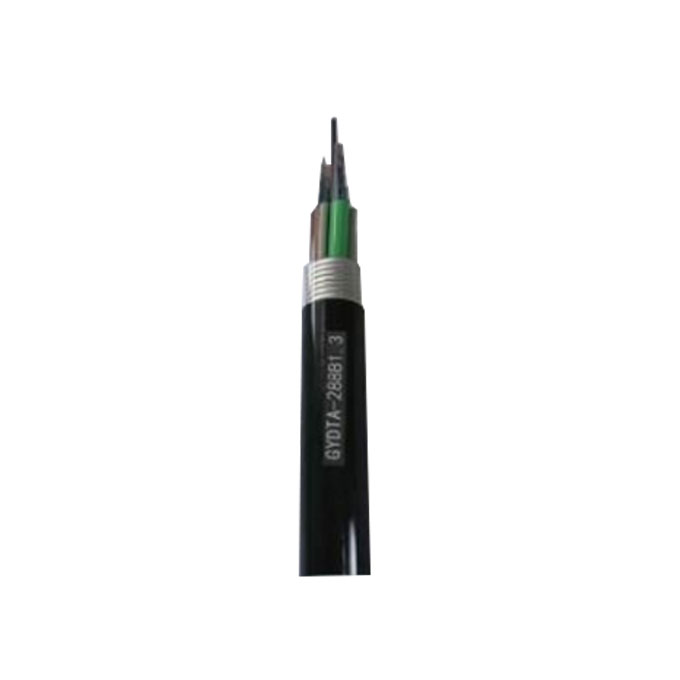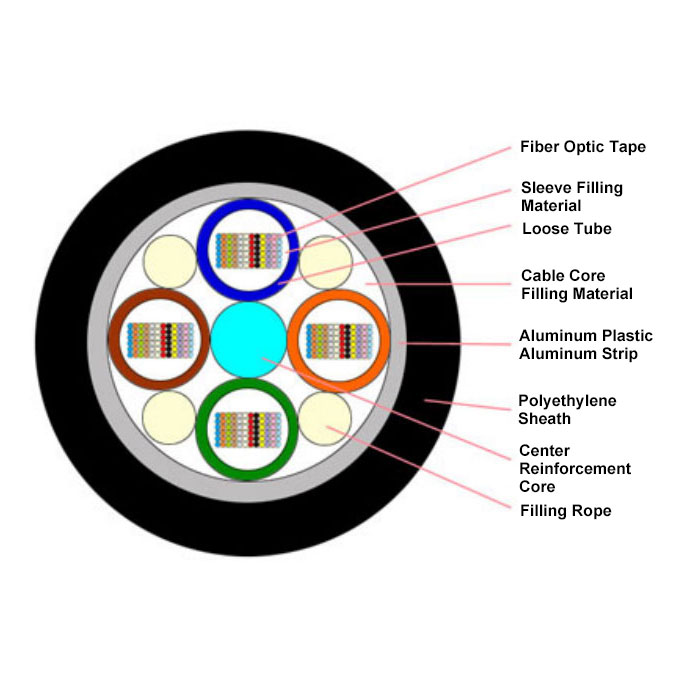- Product description
-
The structure of GYDTA optical cable involves placing fiber ribbons in a loose tube with filling gel (the fiber ribbon can be 4, 6, 8, or 12 cores); the central core of the cable is a steel wire (may be added with PE cushioning layer), surrounded by a loose tube and filled with filling rope; the gap inside and outside the cable core is filled with cable gel; the cable outer sheath is made of aluminum polyethylene.
The fiber ribbon consists of 4-24 optical fibers arranged in parallel and cured by UV. When using fiber ribbon inside the cable, it is called fiber ribbon cable, commonly known as ribbon cable. Fiber ribbon cable is suitable for segments with large fiber counts in metropolitan area networks and wired access networks. The commonly used fiber ribbon cables are stranded structure (GYDTA) and skeleton structure (GYDGA). The structure of GYDTA cable is the same as GYTA, except that multiple 4-core, 6-core, or 12-core fiber ribbons are placed inside each loose tube instead of loose fibers. The structure of GYDTA cable is shown in the figure below.
Range of fiber counts: 4 to 288 fibers
Specific cable models such as: GYDTA-288B1.3-12F, etc.
Product features:
Excellent mechanical performance and temperature characteristics.
Effective protection of optical fibers.
Very tight cable structure design.
Strong water-blocking and moisture-proof performance.
PE outer sheath has strong resistance to ultraviolet radiation and abrasion resistance.
GYDTA optical cable performance indicators:
Allowable tension: Long-term 600N, short-term 1500N;
Allowable crush resistance: Long-term 300N/100mm, short-term 1000N/100mm;
Bending radius: Static bending radius is 10 times the cable diameter, dynamic bending radius is 20 times the cable diameter;
Storage and operating temperature range: -40~+70°C.
Meet standards: YD/T 981.3 and IEC 60794-1
Application range: Segments with large fiber counts in metropolitan area networks and wired access networks.
Installation method: Pipeline, non-self-supporting aerial installation


 中文版
中文版 ENGLISH
ENGLISH

